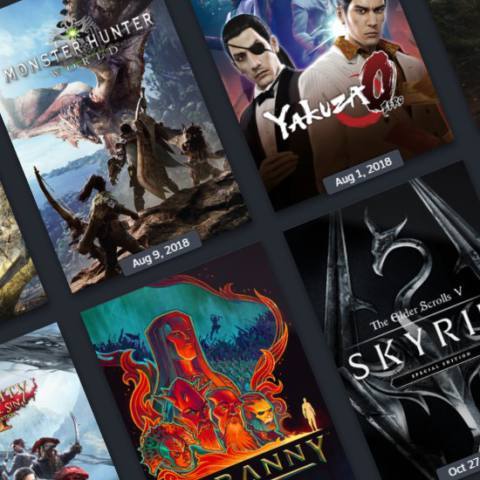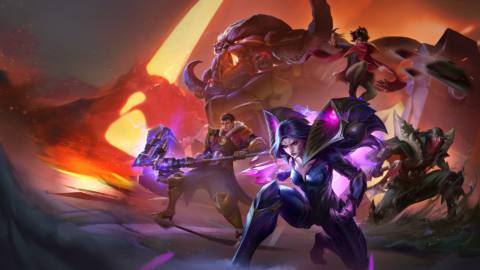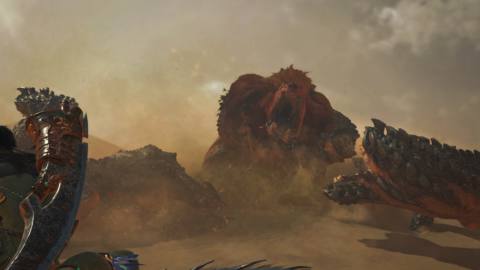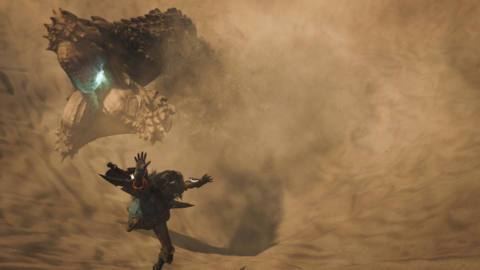Given the age-old connections between wargaming and TTRPGs, it should come as no surprise that there’s a lot of history to roleplaying in the various worlds of Warhammer. Games Workshop’s settings are rich, evocative, and lushly detailed, with loads of room for players to tell their own stories—perfect for a really engrossing campaign.
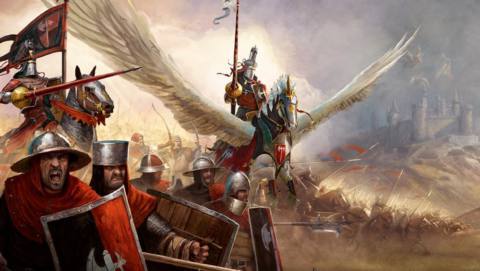
Cubicle 7’s next Warhammer TTRPG release is The Old World, a new Warhammer Fantasy game designed to tie into Games Workshop’s recent relaunch of the setting. Details are light so far, but I suspect it could be a more heroic take, compared to WHFRP’s very bleak, powerless tone.
If you’re interested in Warhammer roleplaying today, the good news is that there are more great games available than ever, across Warhammer 40,000, Warhammer Fantasy, and the newer Warhammer: Age of Sigmar. It’s a great way for those who love the wargames to get even more out of the hobby, but I think it’s also a great option for those who don’t have the time for building and painting miniatures. It’s a way of engaging with these worlds that’s much less demanding on your time (and your wallet), requiring only a book and some dice to roll.
The official Warhammer TTRPGs aren’t published by Games Workshop themselves. Various companies have held the licenses for the different settings over the years, including Green Ronin, Fantasy Flight Games, Black Industries, and Hogshead Publishing. But right now, things are pretty simple: Cubicle 7 currently holds the rights to all Warhammer TTRPGs, selling both their own new games in each setting, and older games originally released by others.
Figuring out which game is right for you can still be confusing, however, so let me break down what’s on offer, and hopefully guide you to a book that kicks off your next amazing campaign.
Warhammer Age of Sigmar
Warhammer Age of Sigmar: Soulbound
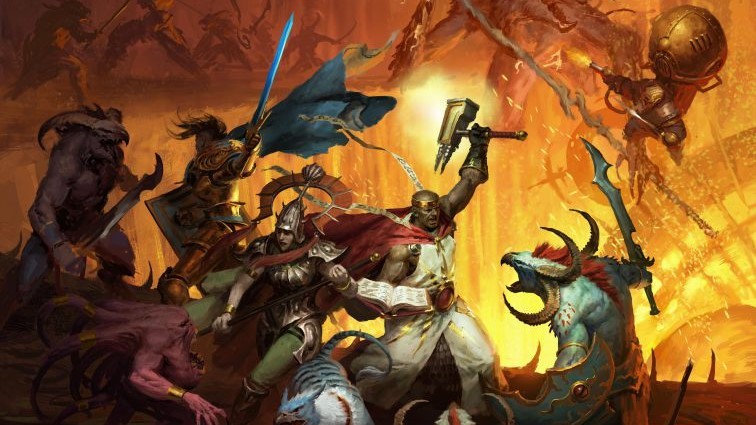
Embracing the mythic fantasy of the Age of Sigmar setting, Soulbound is a game of mighty player characters making their mark on the Realms. A starting party fresh out of character creation can already contain powerful wizards, immortal Stormcast Eternals, and hulking tree men, and easily take on hordes of enemies and towering monsters in battle.
Such epic clashes are supported by a slick dice pool system and a selection of character options that are extensive without being overwhelming. A really excellent set of official campaigns and adventures gives you plenty of material to journey through, too.
By default, Soulbound is a refreshing change of pace from the normally very grim and gritty world of Warhammer TTRPGs—but it does support that darker tone if you want it to, with optional rules in the core book for depowering the PCs, and a campaign book, Ulfenkarn, designed around more horror-themed play. You don’t have to play the good guys, either—the Champions of Destruction and Champions of Death books let players be trolls, ghosts, ogres, vampires, and worse, and there’s a Champions of Chaos book on the way for truly depraved groups.
Warhammer Fantasy
Warhammer Fantasy Roleplay 4e
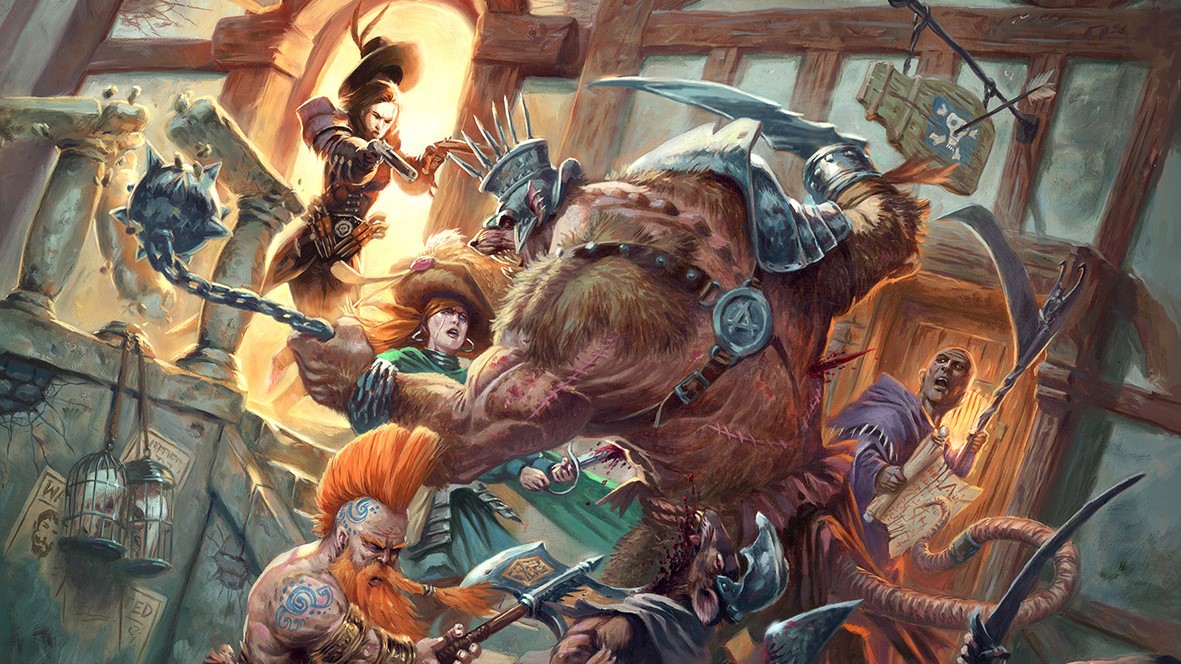
Hold on, I’ve mentioned 2e, and 4e, so what happened to 3e? Well… it’s a bit of an odd duck. An attempt by Fantasy Flight Games to totally change the tone of the game, offering more traditionally heroic adventures using an all-new system, it was much maligned by the fanbase, particularly for its insistence on proprietary dice and cards. As far as I can see it’s no longer available anywhere, at least not legally, though even if you can track it down it wouldn’t be a game I’d recommend.
At the complete other end of the spectrum from Soulbound is Warhammer Fantasy Roleplay, a game so bleak and low-powered that you're more likely to play a ratcatcher or a peasant than a trained warrior. The joy in WFRP comes in finding clever ways to survive and overcome challenges despite the odds being so stacked against you, and witnessing the strangeness and horror of the Warhammer Fantasy setting from the perspective of an ordinary person.
Though a new game from Cubicle 7, this 4th edition is heavily based on the older 2nd edition, and though it offers modern refinements, its d100 system still feels rooted in the past. Whether you find that charming or archaic will depend on your sensibilities, but either way it can be complicated and clunky—in the campaign I'm currently in, I have to use an automated, multi-page spreadsheet to track my character's stats, and don't get me started on the endless maths quiz that is levelling up.
But above all, 4e has preserved the wonderfully grim tone and dark humour of 2e, and if the idea of a game where your muddy, hopeless character faces death around every corner sounds exciting to you rather than depressing, you'll have a blast. Cubicle 7 has also done a great job of releasing updated versions of many of the classic adventures and campaigns of 1e and 2e, some of which rank among the best ever written in the hobby. Check out the free PDF of Night of Blood for a taster.
Warhammer 40,000
Wrath & Glory
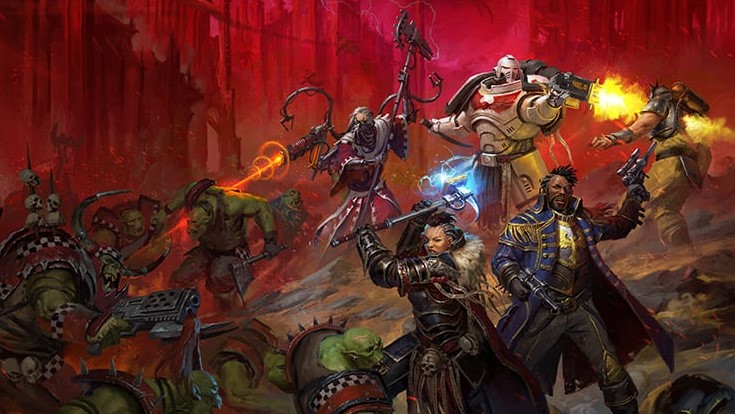
While I’m not sure things ever get truly “heroic” in the absurd grimdarkness of Warhammer 40,000, Wrath & Glory is certainly geared towards lighter, pulpier adventures than most of the other games in the setting. Through a dice pool system similar to Soulbound, it allows you to tell a really broad spectrum of 40k stories, and there are mechanics for balancing mixed parties—so, for example, an Imperial Guardsman and a Space Marine can fight together without the latter outshining the former.
Arguably, the tone gets a little too light for the setting, especially in the artwork—but if the kind of Warhammer 40,000 you enjoy is larger-than-life heroes with even larger weapons fighting for a ray of hope in the darkness, this is the game for you. It’s also the only 40k TTRPG not based on the old d100 system, which does make it much more accessible and faster to run than its peers.
Imperium Maledictum
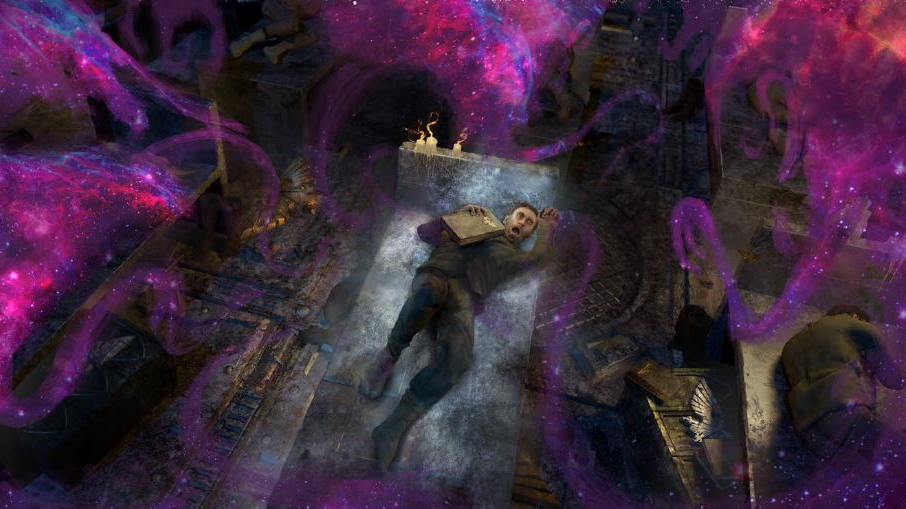
Essentially a spiritual successor to Dark Heresy (see below), and in many ways a close cousin to Warhammer Fantasy Roleplay, featuring a similar d100 system and bleak, oppressive tone. Imperium Maledictum puts the focus on the inner workings of humanity’s empire, casting players as pawns of one of many internal factions, from the Adeptus Mechanicus to the Inquisition to the Imperial Navy.
Like WHFRP, it’s very much a game about playing the underdog, but in this case you’re as much under threat from bureaucracy, politics, and in-fighting as monsters and dark gods. Unfortunately I think that does make it a little dry and impenetrable, and though it does provide some clever updates to Dark Heresy’s rules, I think it lacks its clear focus. It’s still relatively new, however, so there’s space for it to grow, and certainly if you’re interested in the inner workings of the Imperium, you’d be hard pressed to find a more comprehensive guide.
Dark Heresy
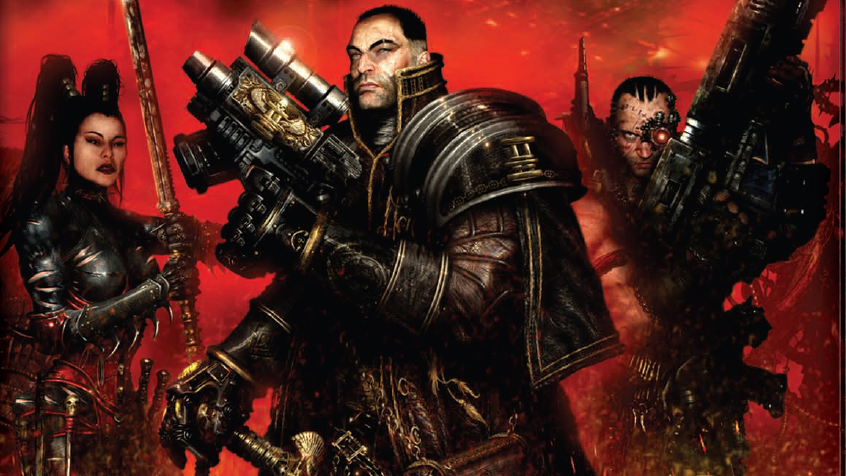
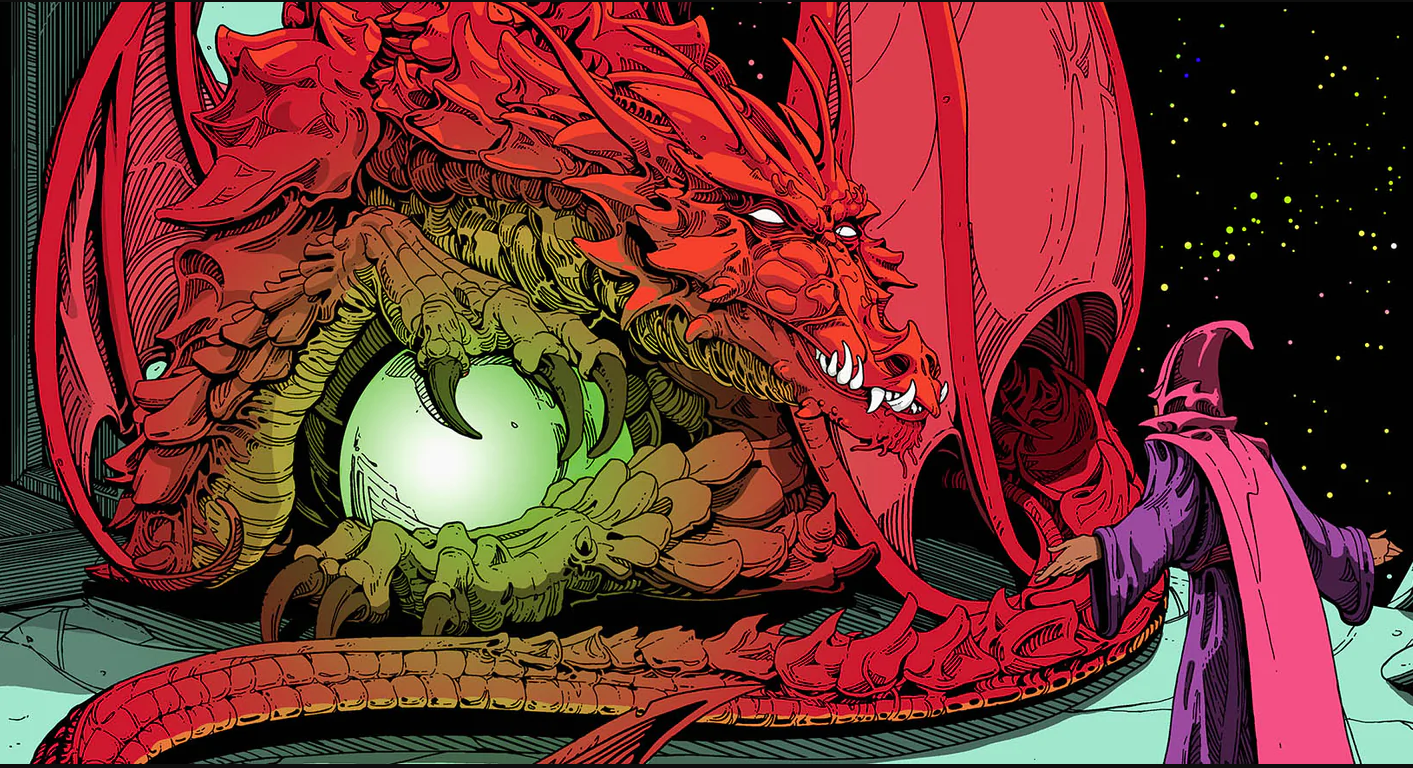
If you’re a TTRPG fan, we’ve got lots more for you to read:
-The coolest tabletop RPGs based on videogames
-How to become a Dungeon Master
Imperium Maledictum’s fan-favourite predecessor is just as grim but a little more precise in its premise, casting players as low level acolytes of an Inquisitor, tasked with missions to root out corruption and evil. It’s a great excuse to send parties of hapless underdogs into situations far beyond their capabilities and watch them scramble to survive.
Like Warhammer Fantasy Roleplay, Dark Heresy is full of horror so awful and absurd it loops round to being funny. I’m particularly fond of its ludicrous collection of horrific random tables, mostly used to determine exactly how mangled you are by the specific kind of weapon that just critically hit you.
It’s no longer active but it received a huge amount of support in its day, and though it was primarily developed by Fantasy Flight Games, all those old books are still sold in PDF form by Cubicle 7 today. But this is another game on that creaky old d100 system, and this is it at perhaps its most unwieldy and difficult to parse. That’s partly because of the nature of the setting—rules designed to be complex when fighting just with swords and shields feel even more so when you throw a thousand different types of sci-fi tech into the mix. But it’s also just because FFG were terrible editors in this period, and the Dark Heresy books (and all the various spin-offs—see below) are rife with mistakes, confusing layouts, and bloated writing.
But none of that erases the fact that I’ve had some of my most fun and hilarious TTRPG sessions ever with Dark Heresy, and if you’ve got the patience for its quirks, it’s got all the 40k content you could ever want. Anything not covered by one of its countless supplements is probably in one of its many spin-offs…
Dark Heresy spin-offs
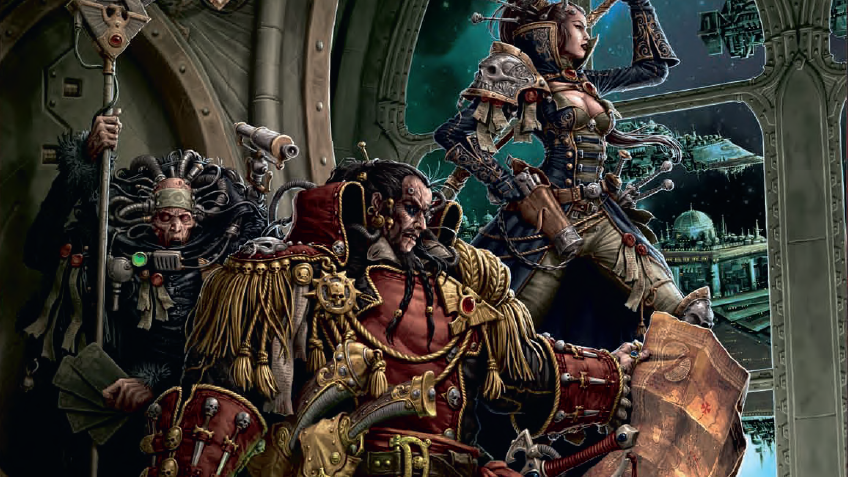
You certainly couldn’t fault FFG’s rate of production while it held the Warhammer 40,000 license. Not content to rest on the laurels of Dark Heresy, it was constantly releasing new versions of the game covering different corners of the setting, each with their own library of supplements and adventures, and they’re all still available via Cubicle 7 on DriveThruRPG.
Rogue Trader focuses on the journeys of 40k’s rascally merchant explorers, allowing for more adventurous stories and more diverse parties—even including xenos characters. Deathwatch ups the ante by letting you play as not just Space Marines, but their most elite alien-hunters—though its simulationist approach to the idea means you’ll have to track a whole page of special rules for your genetically-enhanced organs while you’re battling the xenos threat.
Only War is all about the lowly soldiers of the Imperial Guard, and lets you embody not just a squad but the regiment they fight in too. Lastly, Black Crusade lets you leave all that Imperial nonsense behind and embrace Chaos, playing as cultists and Chaos Space Marines. An alluring premise, though slightly undone by the book’s strange assumption that you’ll spend more time hanging out in the Eye of Terror with other weirdos rather than trying to corrupt and destroy Imperial worlds.
All of these use the same overall system as Dark Heresy, with adjustments for their particular style and tone. Generally I’d say the further you get from playing lowly humans, the more the rules start to collapse under their own weight. Only War, for example, is a pretty good fit, simply telling its underdog stories on muddy battlefields rather than in overpopulated hive cities—whereas Deathwatch’s attempts to bend a gritty and deadly system to support superhuman soldiers having never-ending fights result in pretty exhausting sessions.

